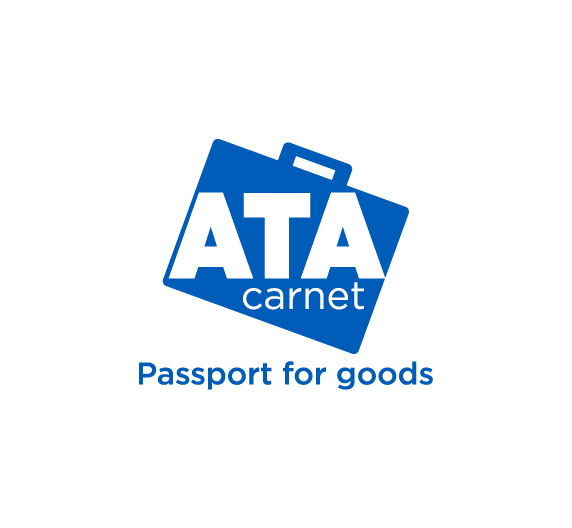Blog /
Canadian businesses and Brazil’s G20: Recapping the Canadian Chamber mission to the B20 in São Paulo
Canadian businesses and Brazil’s G20: Recapping the Canadian Chamber mission to the B20 in São Paulo
The Canadian Chamber of Commerce convened a delegation of Canadian business leaders in São Paulo, Brazil from October 23 to October 25 for the B20 Summit.

The Canadian Chamber of Commerce convened a delegation of Canadian business leaders in São Paulo, Brazil from October 23 to October 25 for the B20 Summit. The business-led trade mission highlighted the importance of Canadian engagement with the region, the importance of the B20 as a convening forum for the global business community, as well as need for deepening cooperation between the G7 and the G20.
From its inception in 1999, Canada has been an important player in the G20. Canada is widely credited with pioneering the concept and mission of the G20, co-creating it as a finance ministerial forum in 1999 under the direction of Finance Minister Paul Martin. Successive Canadian governments have since worked with other member countries to strengthen and elevate the forum to a major leader-level intergovernmental organization that now comprises around 85% of the world’s GDP.
As global trade grows increasingly fragmented, the G20 has emerged as an increasingly relevant international forum for bridging divides and facilitating productive global economic cooperation. In this context, it is important that the Canadian government meaningfully engage the G20 to ensure that this important global platform works for Canada and Canadian businesses. As Canada holds the G7 Presidency in 2025, how Canada engages with the G20 will be particularly consequential in the coming months.
In 2024, Brazil holds the G20 Presidency and Brazil’s National Confederation of Industry (CNI) serves as the Business 20 (B20) host organization. The B20 is the official G20 dialogue forum with the global business community.
Throughout this past year, the Canadian Chamber of Commerce has worked closely with CNI to develop the B20’s key priorities. Through the Canadian Chamber’s ongoing engagement with the B20, Canadian businesses are influencing the G20 agenda by shaping the B20 Brazil Final Communique and the activities of the various B20 Task Forces and Action Councils.
The Canadian Chamber’s mission to the B20 Summit in São Paulo sought to build on these ongoing efforts by deepening connections between Canadian and Brazilian businesses, as well as by connecting Canadian businesses with the G20 business community.
The Canadian Chamber’s business delegation included Canadian business leaders from various sectors including mining, financial services, professional services, and investment promotion.
Brazil-Canada Summit
The Canadian Chamber delegates kicked off the mission in São Paulo on October 23 with the Brazil-Canada Summit. Organized by the Chamber of Commerce Brazil-Canada (CCBC), the Brazil-Canada Summit brought together key speakers from business, government, and academia, for sessions focused on advancing Canadian innovation in Brazil and on a global scale. Speakers included, Emmanuel Kamarianakis, Ambassador of Canada to Brazil, Loui Anastasopoulos, CEO at TSX, and Matthew Holmes, the Canadian Chamber’s EVP International and Chief Public Policy.
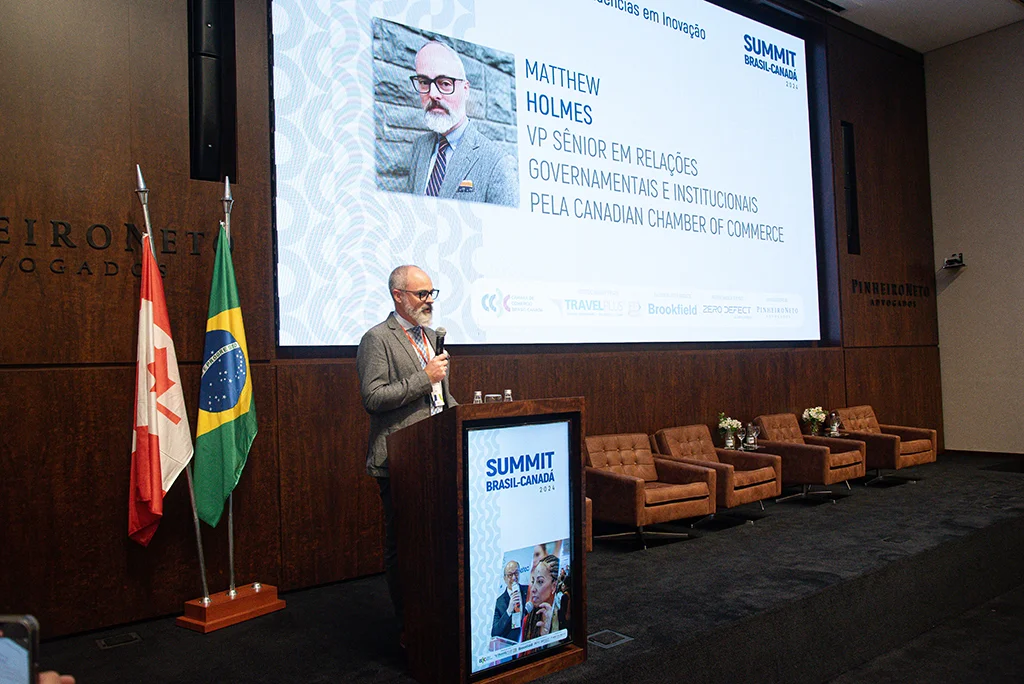

Bloomberg New Economy
Bloomberg New Economy at B20 is a special global gathering that took place on the margins of the B20 Summit in São Paulo. The Bloomberg New Economy event brought business and government together to set the agenda for global economic development and transformation. Canadian Chamber delegates enjoyed access to this premier global event, which featured Carlos Fávaro, Brazil’s Minister of Agriculture and Livestock, Katherine Tai, Trade Representative of the United States of America, as well as a variety of global business leaders including Bill Gates.



Canadian Chamber Roundtable on Canada-Brazil & G20
On the second day of the mission, prior to the official start of the B20 Summit, Canadian Chamber delegates took part in an exclusive morning roundtable discussion regarding Canada-Brazil relations, Brazil’s G20 Presidency, and the future of Canda’s engagement with the region. This roundtable was co-hosted by Chamber of Commerce Brazil-Canada (CCBC). In addition to the Canadian Chamber delegation, participants included Caroline Charette, Consul General of Canada to Brazil in São Paulo, as well as Brazilian policy experts, representatives of Brazilian trade and investment promotion government agencies, and businesses.




B20 Summit
The B20 Summit bought together over 1,000 business representatives from G20 countries to discuss economic and business issues of global significance. The 2-day B20 Summit program included panels and engagement opportunities with global experts, business leaders, and G20 government officials, including Brazil’s Vice-President, Geraldo Alckmin. Canadian Chamber delegates participated in the formal B20 program, as well as networking activities and various informal side-meetings.




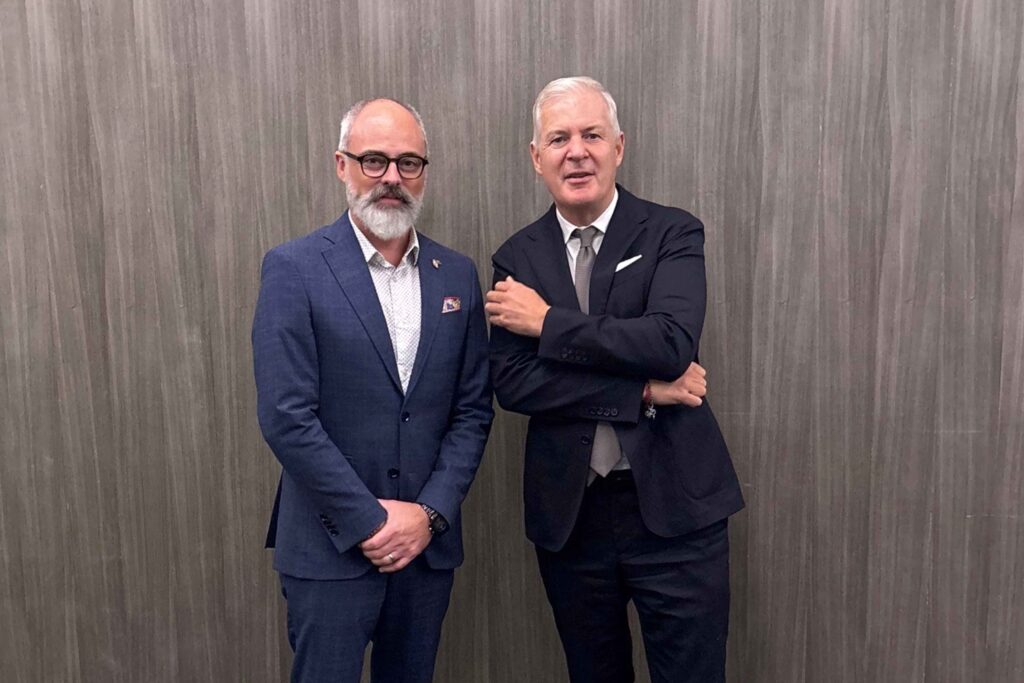

Making the G7 and G20 work for Canadian business
Since returning from the B20 Summit in São Paulo, the Canadian Chamber team has remained engaged in finding ways to make the G20 work for Canadian businesses. In the lead up to the G20 Leaders’ Summit, Matthew Holmes participated in a high-level roundtable on Canadian business’ interests related to the G20 hosted by the Rotman School of Management. Key roundtable participants included Cynthia Termorshuizen, Canada’s G7 Sherpa, Emmanuel Kamarianakis, Ambassador of Canada to Brazil, and the Hon. Bill Morneau, Canada’s 39th Minister of Finance from 2015 to 2020.

Looking forward, next year’s G20 and G7 Presidencies will present significant opportunities for Canadian businesses. South Africa will hold the G20 Presidency, marking the first time an African country has presided over the G20, and Canada will hold the G7 Presidency. The Canadian Chamber will remain steadfastly committed to advancing the interests of Canadian businesses through our leadership as the B7 host organization in Canada, as well as our close engagement with our South African partners on the B20.
The Canadian Chamber of Commerce extends our sincere thanks to our partners, the Chamber of Commerce Brazil-Canada and the Consulate General of Canada in São Paulo, for their assistance with our mission.
Other Blogs

Policy Matters: Revisiting the 3 Most Popular Topics of the Year

Vaccines: A Potential Key to Unlock Many of Canada’s Healthcare Challenges

Cybersecurity Is Foundational to Canada’s Economic and National Security
Blog /
Policy Matters: Why It’s Time to Care about CUSMA
Policy Matters: Why It’s Time to Care about CUSMA
Businesses across Canada rely on the stable and predictable trading environment CUSMA has created.
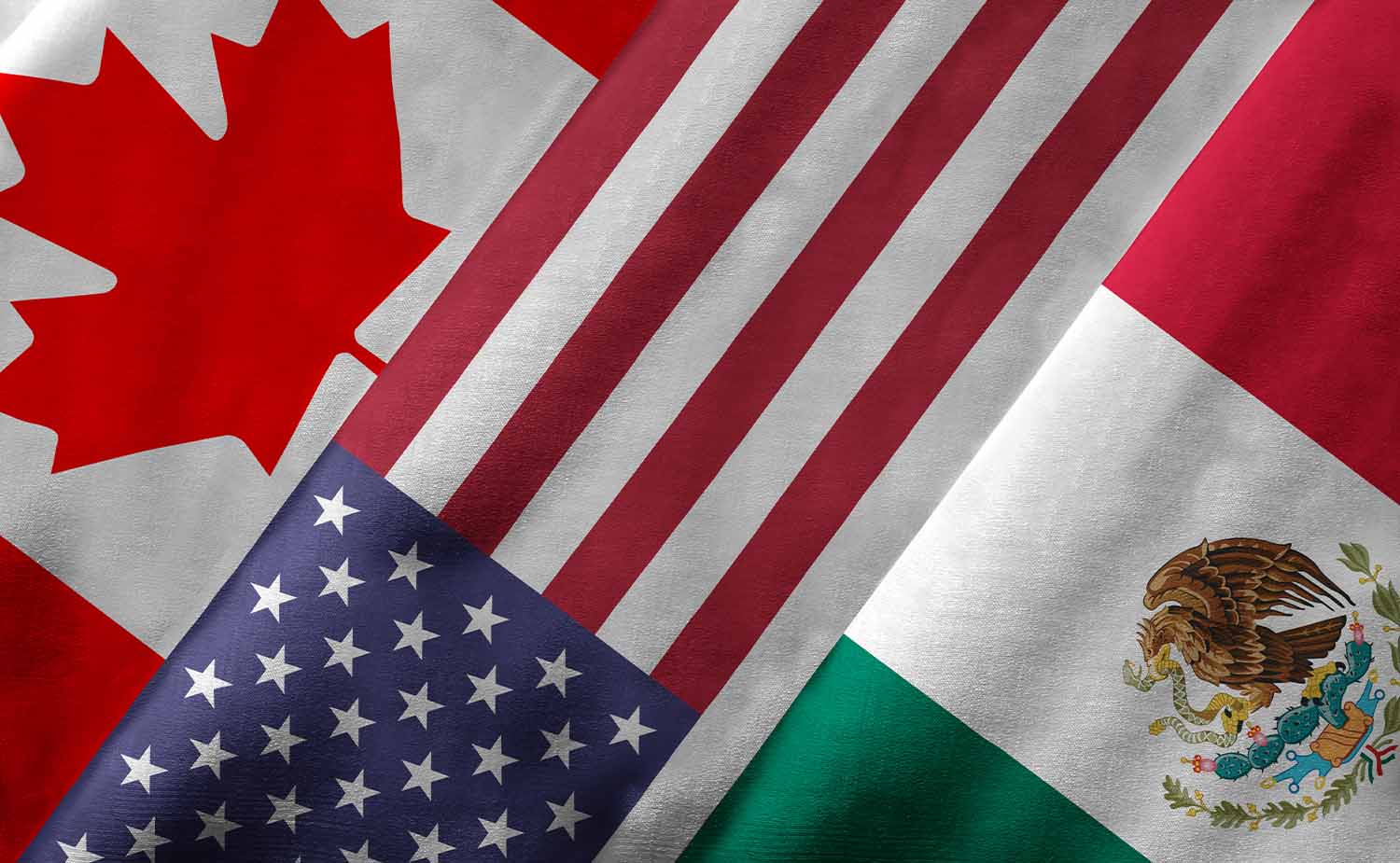

Canada, the United States, and Mexico share one of the largest trading relationships in the world, jointly accounting for almost a third of global gross domestic product (GDP). This critical economic partnership among the three North American economies is underpinned and enabled by the Canada-United States-Mexico Agreement (CUSMA), a free trade agreement that took effect in March 2020, replacing the North American Free Trade Agreement (NAFTA).
Businesses across Canada rely on the stable and predictable trading environment CUSMA has created. The Agreement has contributed to Canada’s attractiveness as a country to invest in while also providing more opportunities for Canadian businesses to invest in the United States and Mexico. Since the Agreement came into effect, there has been a 47% increase in North American trade, as well as an additional 4 million new jobs supported by this trade.

Why Should Canadians Care about CUSMA?
Canada sells a lot of products and services to the United States and buys a lot from them too. Enough that $3.6 billion worth of trade crosses the Canada-U.S. border each day! Canada’s trade relationship with Mexico is also critical to our economy — they’re our third largest single-country goods trading partner.
By eliminating almost all tariffs and keeping most North American trade duty-free, CUSMA makes it a lot easier and more affordable for Canadian businesses get their products to customers in the United States and Mexico, and for Canadians to purchase their favourite products from stores.
Our economy benefits a lot from CUSMA and the trade it enables, and when our economy prospers, everyone’s standard of living goes up.

Why has CUSMA been in the news lately?
On July 1, 2026, Canada, the United States and Mexico will decide whether to extend CUSMA for a new 16-year term. If they choose not to, there will be a review every year until the Agreement terminates in 2036.
Ahead of the review is the 2024 United States presidential election. Worryingly, there is growing bipartisan consensus in the United States on “Buy American” protectionist policies that is at odds with CUSMA’s goal of North American economic cooperation. Regardless of whether a Democrat or a Republican president occupies the White House when the CUSMA review happens, there is a risk that the United States will seek changes to CUSMA that are detrimental to the interests of Canada and Canadian businesses.

Addressing Key Irritants Now Will Help Ensure a Smooth Review
The CUSMA review should be seen as an opportunity to reaffirm the critical importance of North American economic cooperation, rather than as an opportunity to radically shift the terms of the Agreement.
To help ensure a smooth review, Canada should take steps now to address economic irritants that are shared areas of concern for both U.S. and Canadian businesses.
- Digital Services Tax (DST): Canada’s new DST is a source of contention with the United States. Multiple U.S. political leaders, including President Biden, have cautioned that the DST unfairly impacts U.S. businesses and could lead to trade retaliation. When France implemented a DST, the United States announced they would impose 25% tariffs on products unrelated to digital services, ranging from champagne and cheese to handbags and perfumes, starting in January 2021. Many Canadian businesses across multiple sectors are concerned about the potential impacts of retaliation on their supply chains and the affordability and availability of their products.
- The Artificial Intelligence and Data Act (AIDA): Canadian businesses are concerned that AIDA’s perceived lack of interoperability with other countries’ AI regulations will negatively affect businesses that operate or seek to operate in Canada. Businesses have said that AIDA is viewed by their U.S. partners as being unnecessarily broad and punitive, and that it would likely deter investment in our economy.
- Frequent labour disruptions: Recurring supply chain disruptions are damaging Canada’s economy, straining our trade relationships and undermining our credibility as a reliable trade partner. The government needs to provide new dispute resolution tools, including the authority for the federal cabinet to compel binding arbitration for the resolution of labour disputes.
- Defence spending: Prime Minister Trudeau’s recent announcement that Canada hopes to meet the NATO defence spending commitment (2% of GDP) by 2032 was underwhelming and lacked specificity on implementation. Meaningfully addressing the new and evolving threats in the global security environment as well as reestablishing Canada’s reputation as a dependable security partner requires a credible plan that is serious about shoring up and modernizing our defence industrial base. Canada’s strengths in aerospace, critical minerals, cybersecurity and AI can be leveraged to bolster our own security and to help fill gaps in the security architectures of our NATO allies.
These four irritants are issues that the Canadian government can influence directly and as such, should take urgent action on. For the full list of irritants, read our submission to the International Trade Committee’s study on the pending CUSMA review.

The Canadian Chamber’s Canada-U.S. Engagement Plan
Canada can’t wait until 2026 or even next year to start preparing the ground for the CUSMA review. We need a coordinated outreach campaign now that reminds Americans of why a healthy relationship with Canada is important to them, their businesses and their nation’s economy.
Which is why, at the beginning of this year, the Canadian Chamber launched a new Canada-U.S. Engagement Plan aimed at providing Canadian businesses opportunities to increase ties with U.S. counterparts and policymakers. As part of its plan, the Canadian Chamber will lead four business missions to the U.S. in 2024, focused on key areas of the Canadian economy where there are significant opportunities for growth and synergy with the U.S. economy: life sciences, Canada-U.S. trade, artificial intelligence and critical minerals. Two missions have already been conducted with two more happening this fall.
Other Blogs

Policy Matters: Revisiting the 3 Most Popular Topics of the Year

Vaccines: A Potential Key to Unlock Many of Canada’s Healthcare Challenges

Cybersecurity Is Foundational to Canada’s Economic and National Security
Blog /
Two years in, the Russian invasion of Ukraine remains an affront to humanity
Two years in, the Russian invasion of Ukraine remains an affront to humanity
The starting point for ensuring a better future for Canadians and Ukrainians is to recognize how much has changed.

Today, on the two-year anniversary of Russia’s illegal invasion of Ukraine, the Canadian Chamber of Commerce reiterates our deep dismay that Ukraine’s sovereignty is still under attack and the Ukrainian people must still live under siege. The Putin government’s brutal invasion violates both the rule of law and the international norms on which democratic societies and free economic systems rest.
The starting point for ensuring a better future for Canadians and Ukrainians is to recognize how much has changed. The world is a fundamentally more dangerous place as democracies find themselves under assault from increasingly assertive undemocratic regimes.
This conflict presents serious choices for our political leaders, for businesses and for citizens, both here in Canada and among our democratic allies.
If it was ever more than a dangerous illusion for Canadians to believe that our geography makes us safe from the conflicts that tear apart countries in other parts of the world, there is certainly no room for complacency now. We do not live on an island where what we hold most dear is secure while the lives and freedoms of others are stolen from them.
Canada was the first Western nation to recognize Ukraine’s independence in 1991. Since then, we have enjoyed close trade relations with Ukraine, and Canada has benefited from the over one million Canadians who are of Ukrainian heritage. We have been both the benefactor and the beneficiary as Ukrainians have chosen to make new lives here.
What is taking place in Ukraine is first and foremost a human tragedy, but it has important economic consequences as well. Canada’s relationship with Ukraine is both strategic and mutually beneficial. We play a significant and important role in each other’s economies. Over the decades, Canada’s economy and population have profited from hundreds of millions of dollars of Ukrainian technology and products, in addition to our own pharmaceutical, machinery and aquaculture exports to that country.
It is in Canada’s best interest to maintain this relationship, which is why the Canadian Chamber wholeheartedly supports the legislation passed earlier this month to update Canada’s free trade agreement with Ukraine. This legislation underscores Canada’s commitment to our long-standing friend and acknowledges our decades of trade. It positions us to support Ukraine in its economic recovery and further its physical, economic and energy security. And highlights the need for strategic, long-term investment in trade infrastructure to strengthen Canada’s vulnerable supply chains so Canada, Ukraine and other partners can continue successful trade even during times of geopolitical crisis.
The Canadian Chamber supports efforts by Canada and its allies to end the conflict. We express our continued solidarity with the Ukrainian people and the Ukrainian business community during these tragic times. Let us work with our democratic partners around the world so we will never have to mark another such anniversary.
This article originally appeared in iPolitics.
Other Blogs

Policy Matters: Revisiting the 3 Most Popular Topics of the Year

Vaccines: A Potential Key to Unlock Many of Canada’s Healthcare Challenges

Cybersecurity Is Foundational to Canada’s Economic and National Security
Blog /
Canadian Chamber recommends responses to US Inflation Reduction Act before House Trade Committee
Canadian Chamber recommends responses to US Inflation Reduction Act before House Trade Committee
On November 15, 2022 David Billedeau, the Canadian Chamber’s Senior Director Natural Resources, Environment, and Sustainability appeared before the House...
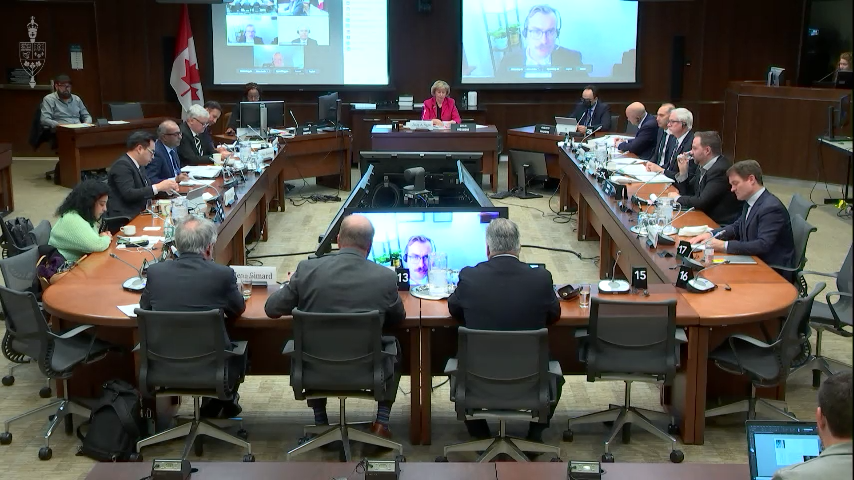
On November 15, 2022 David Billedeau, the Canadian Chamber’s Senior Director Natural Resources, Environment, and Sustainability appeared before the House Standing Committee on International Trade to address the potential trade impacts of the United States Inflation Reduction Act.
In his remarks, Billedeau highlighted the potential opportunities as well as the risks for several Canadian sectors, including automotive manufacturing, critical minerals, clean technology, and labour. He also made several important recommendations, including working to enable Canada to attract more venture capital, expedite approvals to reduce project lead times, and for Canada to create a green jobs strategy.
David Billedeau’s opening remarks
Check against delivery.
Madam Chair and Honourable Members, thank you for the opportunity to attend today’s discussion on behalf of the Canadian Chamber of Commerce.
While the Inflation Reduction Act of 2022 presents opportunities for Canadian businesses, we must also recognize significant challenges facing Canada’s private sector. To that end, I will tailor my remarks to focus on automotive manufacturing, critical minerals, clean technologies, and labour considerations.
With respect to automotive manufacturing, the Act introduces and extends EV tax credits—notably, eligibility for these credits ultimately requires EV batteries to be 100% made in North America by 2029. This creates considerable opportunities for Canada’s natural resources and manufacturing sectors.
However, given the protracted timelines to build upstream and midstream mining infrastructure, as well as the lead times to modify automotive supply chains, it will be difficult for automotive manufacturing firms operating in Canada to meet credit eligibility requirements in the near-term.
This brings us to critical minerals. Global demand for certain minerals is expected to increase by up to 600% by 2040. This presents a rare opportunity for Canada, and the Chamber believes that Canada can serve North American and global market demand for minerals required for electric vehicles and clean technologies.
To match domestic mineral production and processing with increasing demand, it is important to focus attention on facilitating resource development within Canada—where it takes an average of 15 years to move mining projects from discovery to first production. These lead times will impact Canada’s decarbonization efforts while limiting opportunities to develop new and existing mining and manufacturing facilities across Canada.
On the topic of clean technologies, the Inflation Reduction Act contains supports for domestically produced alternative fuels such as hydrogen and biogas—as well as for clean technologies like CCUS. Further, the Act contains credit multipliers for products meeting domestic content and local human resources thresholds. Such incentives will make it difficult for Canadian clean technology firms to compete in the US market.
While Canada’s recent Fall Economic Statement has provided investment tax credits for clean technologies, Canada must take further measures to secure a level playing field and opportunities for Canadian workers.
Lastly, a few comments on labour availability. A study conducted by the BlueGreen Alliance indicates that the Act will create over 9 million “climate-tech” jobs in the US by 2032—largely in STEM fields.
The skyrocketing demand for labour in the United States will place pressure on Canada’s ability to attract and retain skilled workers to drive its own green economy. This is concerning as the competition for talent is already a major pain point in Canada, with around one-third of Canadian businesses experiencing labour difficulties.
With these factors in mind, I would like to table the following recommendations for your consideration.
First, to further develop our mining, clean technologies, and advanced manufacturing sectors, Canada must be able to compete for major capital investments. This requires securing venture capital for early-stage projects, accelerating the implementation period of the Strategic Innovation Fund, expanding fund allocation for critical minerals, and ensuring that incentives within the Inflation Reduction Act do not serve as non-tariff barriers to Canadian businesses.
Second, to reduce mining project lead times, the Government of Canada must work with a spectrum of stakeholders to responsibly expedite development and permitting timelines.
Third, Canada needs a green jobs strategy that brings together all levels of government—as well as secondary and post-secondary institutions across the country—to develop the domestic capacity of skilled workers needed to drive our economy and build the projects that will get us to net zero.
In close, the Canadian Chamber encourages the Committee to carefully examine the regional economic implications of the Inflation Reduction Act while also looking towards the boundless potential for Canada to drive global transitions to net zero. Thank you again for your time and consideration. I look forward to your questions.
Other Blogs

Policy Matters: Revisiting the 3 Most Popular Topics of the Year

Vaccines: A Potential Key to Unlock Many of Canada’s Healthcare Challenges

Cybersecurity Is Foundational to Canada’s Economic and National Security
Blog /
ArriveCAN App should be used to streamline, not complicate, border crossing: Canadian Chamber tells House International Trade Committee
ArriveCAN App should be used to streamline, not complicate, border crossing: Canadian Chamber tells House International Trade Committee
On June 15, 2022, Mark Agnew, the Canadian Chamber of Commerce Senior Vice President, Policy and Government Relations, appeared before...

On June 15, 2022, Mark Agnew, the Canadian Chamber of Commerce Senior Vice President, Policy and Government Relations, appeared before at the House of Commons Standing Committee on International Trade to address concerns around the border, customs backlogs, and the ArriveCAN App in particular.
Agnew advised committee members that using digital tools, such as the ArriveCAN App, to streamline border crossing procedures is important to help improve flow at Canada’s borders and enable contactless travel. Unfortunately, ArriveCAN’s experience has proven difficult as a result of it creating duplications, myriad locations to enter the same data, a lack of functionality, and problems with accessibility.
Fixing these problems is an urgent matter, with summer travel season arriving.
Mark Agnew’s opening statement
Check against delivery
Chair and honourable members, thank you for having me back again to this committee. It is a pleasure to be here in person. The Chamber is glad to see the committee take on this study as the summer travel season begins to ramp-up.
To say the pandemic has been a disruption to international travel is an understatement. We went through a complete decimation of travel flows and then backlogs at key points of entry as travel begins to ramp up. Executing effective border policies is not optional given the criticality of travel for the economy, whether it is tourism or business travel. We must get it right in order to ensure Canada remains an attractive destination for travellers. Given the long lead-in time for event planning, organizers will take decisions today that impact potentially 12-18 months out.
I want to turn to the committee’s main topic of interest, the ArriveCan app. The Canadian Chamber has long been a proponent of digitizing border procedures to support contactless travel. Unfortunately, the ArriveCan experience has proven difficult at the border.
The first point to note are the duplications created by the app. The traveller experience has been complicated by the diffuse places that the same information has to be inputted. As someone who recently travelled out of the country, it is striking that information is being entered through both my airline and the app profile.
The second point are the data requirements for the app, particularly for tourists from the US engaging in day trips. Travellers that would engage in day trip activities simply wouldn’t have a Canadian address. This directly impacts border communities and we’ve heard from those border town chambers about the impact on cross-border movement.
Third are the concerns with universal access. I am fortunate to have the tech literacy to use the app, but many travellers – particularly elderly travellers – do not always have that literacy. I was astounded to read from the CBC recently that a shop in Maine is offering dedicated services to help Canadians fill out the app. There are also issues for travellers whose first language is neither English nor French.
CBSA reported that as of the first week of April that 99% of air travellers and 94% of land travellers are using the app. With contact time with CBSA officers having significantly increased from the pre-pandemic 30 seconds per traveller, the system in its current form is not efficient and simply not working.
This isn’t to say scrap the app. As I noted a moment ago, digitizing border processes is vital. We instead should reorient the app to focus on streamlining customs procedures, as well as see what sort of manual alternatives may be needed in reserve.
Ultimately the app is in large measure a reflection of border policy.
The announcement last week of suspending randomized testing and moving testing out of airports was a welcome development, and this week partially lifting vaccine mandates is welcome news. However, there is more work ahead. For example, the decision to lift the outbound vaccination requirement, but maintain it for inbound travel, risks straining the system as this means tests of return and quarantine for unvaccinated Canadians coming back into the country.
With summer travel season here, and the last two seasons being missed, we don’t have the luxury of time to get this right.
Thank you for your attention and I look forward to your questions.
Other Blogs

Policy Matters: Revisiting the 3 Most Popular Topics of the Year

Vaccines: A Potential Key to Unlock Many of Canada’s Healthcare Challenges

Cybersecurity Is Foundational to Canada’s Economic and National Security
Blog /
Canadian Chamber encourages House International Trade Committee to set clear priorities for its Indo-Pacific strategy
Canadian Chamber encourages House International Trade Committee to set clear priorities for its Indo-Pacific strategy
On April 27, Mark Agnew, Canadian Chamber of Commerce Senior Vice President, Policy and Government Relations, appeared at the House...

On April 27, Mark Agnew, Canadian Chamber of Commerce Senior Vice President, Policy and Government Relations, appeared at the House of Commons Standing Committee on International Trade regarding its study into opportunities for Canada in the Indo-Pacific region.
Agnew suggested four important, though not all encompassing, areas of focus to guide the strategy: trade policy opportunities, to be clear-eyed regarding the challenges surrounding China, to be judicious in targeting specific markets and sectors, and supporting the role of business in bolstering trade relationships.
Mark Agnew’s opening remarks
Check against delivery
Chair and Honourable Members, thank you for the invitation to appear as part of your study into opportunities in the Indo-Pacific region. This is a timely study as the government continues work on its Indo-Pacific Strategy.
I would like to focus my few minutes on several non-exhaustive priorities that the government should consider as it develops its Indo-Pacific Strategy.
The first area is trade policy. We have a number of initiatives ongoing in the region that hold potential for opening new market access opportunities. This includes recently announced initiatives, such as trade negotiations with ASEAN and Indonesia, but also the potential for CPTPP expansion and opening opportunities in underutilized markets like Taiwan.
It is important to go into these discussions with a clear set of priorities. Some of these priorities for the Canadian Chamber include:
- Tariff liberalization for our key export interests;
- Robust digital trade chapters that ensure the protection of cross-border data flows and that data localization does not become a condition of doing business; and
- Enhanced regulatory dialogues to ensure that non-tariff measures, such as SPS regulations, do not become a barrier to trade
In the context of the CPTPP specifically, we urge the government to maintain the high standards of the agreement and not water down its provisions.
The second area is the approach to China. Although the government has committed to delivering an Indo-Pacific Strategy, the elements that pertain to China will be critical. It is important to be clear-eyed about the size of the market and of course the geopolitical challenges. How we engage with China needs to intelligently balanced considerations and it must be anchored around cooperation with allies.
The third key consideration is focus. The reality is that we live in a world of finite resources, financially and in terms of bandwidth to deliver. It would not be realistic to expect that Canada could make a push in all sectors in all countries. We will need to be judicious in how we select markets of focus and the priority sectors that are pursued.
The fourth and final area I want to mention is around the role of non-governmental entities in bolstering trading relationships through the development of on-the-ground connections. Businesses engage in commerce rather than governments, and in doing so they play a part in our footprint in the region. Governments should see trade missions and other activities that facilitate those connections as part of the broader set of foreign policy tools. I know that when I travel abroad, I represent not only the Canadian Chamber but also what foreign nationals perceive about Canada. Therefore, strong government-industry collaboration is critical and mutually reinforcing.
Thank you for your attention and look forward to your questions.
Other Blogs

Policy Matters: Revisiting the 3 Most Popular Topics of the Year

Vaccines: A Potential Key to Unlock Many of Canada’s Healthcare Challenges

Cybersecurity Is Foundational to Canada’s Economic and National Security
Blog /
The Resurgence of International Trade Shows: Showcase Your Products with an ATA Carnet
The Resurgence of International Trade Shows: Showcase Your Products with an ATA Carnet
As in-person events and international travel are slowly resuming, the pre-COVID opportunities for Canadian businesses to showcase their products around...

As in-person events and international travel are slowly resuming, the pre-COVID opportunities for Canadian businesses to showcase their products around the world are starting to regain momentum. The benefits of international trade shows don’t just apply to exhibitors and attendees, but also facilitate foreign relationships and trade and help spur economic growth. Additionally, obtaining an ATA Carnet through the Canadian Chamber of Commerce streamlines all your business’s temporary importing and exporting needs.
What is the advantage of international trade shows?
The Canadian Chamber wants Canadian businesses to excel and flourish in international markets, and trade shows are an excellent way to achieve these goals. Having the ability to easily promote, demonstrate and display your business’s products and services is key to helping foster meaningful relationships with suppliers, customers and distributors. Trade shows are an invaluable source of key networking and educational opportunities. Specifically, international trade shows can provide your business with the ability to raise brand awareness and expand your customer base globally.
The fundamental role of trade shows for Canadian businesses isn’t ending; it’s evolving.
While the industry has been hit with setbacks, and in-person events have been limited due to the pandemic, there is still a demand for trade shows. A recent study from Caretta Research and Bubble Agency found that 83% of respondents prefer in-person events as their communication method to keep up with industry trends and vendor news.
This year, exhibitors are looking to make more meaningful connections with industry insiders and customers, find suppliers that can allow them to create products with sustainable materials and continue their development in business-to-business commerce.
As a Canadian business looking forward to these exciting opportunities, using an ATA Carnet to bring goods to an international trade show minimizes the potential issues of unwanted import tariffs, letting you focus on trade show preparations and exerting your influence on an international scale.

ATA Carnet uncomplicates the international trade show experience.
Exhibitors face enough stress with all the planning involved to attend trade shows and ensure their products are ready to be transported across international borders. Troubleshooting customs and duties at the border should not be one of them.
Perhaps you are travelling to Las Vegas for an exhibit. As you are going through customs, you declare that the reason for your visit to the United States is for business. Upon looking at the products you have brought with you, the customs officer applies a duty fee to your materials, even though you have no intention of selling them. Having an ATA Carnet is the solution to this kind of issue.
What is the ATA Carnet?
Applicable to approximately 80 countries, the ATA Carnet is often described as a passport for goods. It simplifies paperwork when crossing borders for the temporary importation and exportation of goods.
The ATA Carnet provides a flexible and seamless experience.
- The temporary duty-free importation of a company’s goods: By choosing to use an ATA Carnet, your company is allowed to cross borders with commercial samples, professional equipment and goods for presentation and use, with trade shows being a prime example.
- It replaces foreign customs documents: When your business brings goods to international trade shows, you do not need to budget for customs tariffs in each country you intend to visit. Since a large number of countries use the ATA Carnet, one document can give you access to multiple markets. For example, you can attend a trade show in the U.S. and then head to another exhibit in Europe shortly afterward with the same ATA Carnet.
- The paperwork is obtained in advance at a fixed cost in Canadian currency: There is no need to make customs payments or post bonds in foreign currencies. You only pay once per ATA Carnet you purchase, which varies depending on how much your organization’s products cost.
- Businesses can use the ATA Carnet for unlimited trips within a one-year validity period: Once your company purchases its ATA Carnet, the number of times you choose to attend international trade shows is entirely at your discretion. Furthermore, the ATA Carnet has the ability to be tailored to the items listed on the document. For example, your company is attending a trade show to demonstrate your state of the art equipment. Potentially, your first four travels require 20 items listed on your ATA Carnet. But, the following seven you attend only need 17 of those items. With the ATA Carnet, your company can travel with some or all of the items listed, removing the hassle of exporting unnecessary products.
ATA Carnet is the best document to use for your international trade show needs.
There is no better time to consider the ATA Carnet when travelling. When doing so, your business needs to know all the steps to filling out the forms and ensuring your goods’ movement across borders is properly documented.
How to use an ATA Carnet
Once your business receives its ATA Carnet, you will need to ensure you have the correct amount of counterfoils and vouchers for the number of trips you have planned, along with having the front cover validated by Canadian customs. The following steps are to familiarize yourself with the purpose of the coloured pages.
- Yellow: These are the forms required for validating the exported goods from Canada and are required again when re-importing your goods back into the country.
- White: These forms are used for the importation and re-exportation of your goods in the foreign country.
- Blue: These forms are used when you are transiting through a country to arrive at your destination.
A more detailed walkthrough is available here.
Ultimately, the advantages of the ATA Carnet are the simplification of customs procedures for temporary importation/exportation and the avoidance of any unnecessary expenses. Your company can instead focus on exhibiting the results of your hard work.
For more information and to begin the application process, click here.
Other Blogs

Policy Matters: Revisiting the 3 Most Popular Topics of the Year

Vaccines: A Potential Key to Unlock Many of Canada’s Healthcare Challenges

Cybersecurity Is Foundational to Canada’s Economic and National Security
Blog /
Why Buy American narratives fail to see the forest for the trees
Why Buy American narratives fail to see the forest for the trees
Rather than diffuse emerging and ongoing disputes with its neighbour to the north, the Biden administration seems intent on exacerbating them through protectionist measures.

By Candace Sider, Vice-President of Regulatory and Government Affairs, North America, at Livingston International
There’s a peculiar kind of politicking coming out of Washington, particularly on matters related to trade.
It appears that as the Biden administration moves to mend fences across the Atlantic with allies in Europe, it is taking for granted long-time allies right next door.
Rather than diffuse emerging and ongoing disputes with its neighbour to the north, the Biden administration seems intent on exacerbating them through protectionist measures. These were on full display in November with the decision to increase the rate of countervailing duties on Canadian softwood lumber that have been in place since 2017. In addition, the now-beleaguered $1.7 trillion Build Back Better bill included a tax credit on electric vehicles that incentivized the purchase of EVs made with American union labour. Most recently, the issue of how regional value content for vehicles is to be calculated to qualify for tariff exemption under the new USMCA became a point of contention as Washington demands an unnecessarily more complicated calculation than outlined in the trade deal. These are all part of an ongoing policy of trade protectionism euphemistically coined as “Buy American.” Individually, each appears relatively innocuous, but collectively they create a sentiment that normalizes free-market and free-trade barriers and creates an air of uncertainty that discourages cross-border investment.
To be sure, trade across the 49th parallel remains robust. In fact, in 2021, Canada saw its trade surplus with the U.S. nearly triple from the previous year and grow 70% over the pre-pandemic period. It was the largest annual surplus since 2008. And therein lies the rub. Supporters of Buy American policies point to such figures as a threat, interpreting a trade deficit with Canada to be a form economic invasion from the north. But such views are out of touch with a world in which global trade is highly integrated and designed to allow economies to enhance productivity and cost efficiency through international commerce.
Proponents of Buy American policies tend to view deficits as a binary contrast of finished-goods imports over finished-goods exports. That is far from the case. In fact, prior to the pandemic, two-thirds of Canadian exports to the U.S. were cost-saving and productivity-enhancing intermediate goods integral to U.S. production of finished products, many of which were eventually exported from the U.S. to international markets, including Canada. Research from the U.S. Department of Labor shows imported intermediate inputs contributed eight per cent to the annual average growth rate of labour productivity in the private sector between 1997 and 2015.
Equally misleading is the narrative that trade adversely affects U.S. employment. A study by the Business Roundtable conducted in 2019 revealed an estimated 39 million American jobs are supported by trade, and that 7.2 million of these are sustained by trade with Canada alone.
As U.S. producers look to diversify their pool of suppliers away from Asia, they are increasingly investigating near-shore options with Canada being high on the list. U.S. private investment in Canada grew 8.8% between 2018 and 2020, even as the pandemic discouraged such activity.
If trade diversification in the U.S. is to take hold in earnest in the coming years, Canada will inevitably play a critical role. U.S. policymakers would be wise to reduce points of tension across our shared border and incentivize investment, rather than create the conditions that make reliance on overseas production a mainstay of the U.S. supply chain.
Other Blogs

Policy Matters: Revisiting the 3 Most Popular Topics of the Year

Vaccines: A Potential Key to Unlock Many of Canada’s Healthcare Challenges

Cybersecurity Is Foundational to Canada’s Economic and National Security
Blog /
How businesses and Canadians can help Ukraine
How businesses and Canadians can help Ukraine
Like many Canadians, the Canadian Chamber of Commerce is appalled by the further Russian invasion of Ukraine. We support efforts...

Like many Canadians, the Canadian Chamber of Commerce is appalled by the further Russian invasion of Ukraine.
We support efforts by Canada and its allies to take strong measures to end the conflict. The recent actions by the Russian government strike at the rule of law and international norms, which are the foundations of our democratic societies and our economic system.
Like many Canadians, we express our solidarity with the Ukrainian people and the Ukrainian business community during these tragic times for their country. For those that would like to help, we are providing links to the specific areas of greatest need that outline meaningful ways to make donations. We are also providing links to various information sources regarding sanctions and other relevant policy.
How to help
Financially
The Canadian-Ukrainian Chamber of Commerce is working with chambers, associations, and businesses to provide assistance and aid for Ukrainian businesses operating during this time, in order to support Ukrainians and the Ukrainian Army. Read more and contribute.
Canadians wishing to make a humanitarian donation may do so through the Canadian Red Cross Ukraine Humanitarian Crisis Appeal. The Government of Canada will match donations, up to $10 million, until March 18. Donation receipts are provided.
Donations may additionally be made to the United Nations High Commissioner for Refugees (UNHCR) Ukraine Emergency. Donations are tax-deductible.
Employment opportunities
Canadian employers are encouraged to list employment opportunities on the Government of Canada’s Jobs for Ukraine Job Board to help Ukrainian migrants find employment when they arrive in Canada. Ukrainian job seekers can also use the job board to find opportunities. More information on Canada’s migration efforts for Ukrainians is available through the Canada-Ukraine authorization for emergency travel (CUEAT) program.
Refugee sponsorship
Canada’s Private Sponsorship of Refugees (PSR) program allows Canadians to help resettle refugees as individuals or families that qualify under the refugee and humanitarian program. Those in Quebec may access the Program for Refugees Abroad. More information on becoming a private sponsor of a refugee is available through the Refugee Sponsorship Training Program.
Call for volunteers and support
The Ukrainian Canadian Congress (UCC) is currently collecting information from individuals and organizations that may be able to assist. Support could include employment, housing, immigration services, legal, in-kind donations, transportation, daycare/childcare, and more. Complete the UCC form if you or your organization can provide assistance.
Sanctions
The Government of Canada and numerous other countries have enacted sanctions in order to help bring an end to the conflict.
Canada has additionally cut Russia and Belarus from Most-Favoured-Nation Tariff treatment, which results in the application of the General Tariff for goods imported into Canada that originate from Russia or Belarus. Under the General Tariff, a tariff rate of 35% is now applicable on imports from these countries.
Travel advisory
The Government of Canada is urging Canadians to avoid all travel to Ukraine due to armed conflict with Russia. If you are in Ukraine, you should shelter in a secure place unless it is safe for you to leave the country. Read more and access emergency Government of Canada contact information.
Other Blogs

Policy Matters: Revisiting the 3 Most Popular Topics of the Year

Vaccines: A Potential Key to Unlock Many of Canada’s Healthcare Challenges

Cybersecurity Is Foundational to Canada’s Economic and National Security
Blog /
The time to re-energize Canada’s relationship with the U.S. is now
The time to re-energize Canada’s relationship with the U.S. is now
As the world digs out from under the weight of COVID-19 and looks to address the dual challenge of climate change and economic recovery, Canada’s relationship with the U.S. has never been more important.

By Mike Gladstone, Director External Affairs Canada, Enbridge
As the world digs out from under the weight of COVID-19 and looks to address the dual challenge of climate change and economic recovery, Canada’s relationship with the U.S. has never been more important. As friends and allies who share the world’s longest undefended international border this relationship is defined to a large extent by a common interest in trade.
Energy, which flows both ways over the border, is a key component of our trade relationship. In 2019, total trade between our countries was approximately US$718.4 billion, including $138 billion in energy trade[1]. We export more than we import. Energy accounts for about 25% of Canadian exports to the U.S., and just 8% of our total imports – with about 90% of the energy flowing between borders being crude oil and petroleum products.
What’s more important than where we’ve been is where we’re going. Recent events in Europe have underscored the role North American energy can play in supporting our allies around the world.
As global demand for low-carbon goods and services grows, Canada is well positioned to meet the need. Executing a Canadian low-carbon export strategy will take a serious effort, but the benefits could be immense.
And keeping in mind our interdependence with our American friends on climate and energy, it only makes sense that we jointly tackle climate change and transform our highly integrated energy systems
“Building back better” can involve renewable and electricity projects, emerging energy solutions like carbon capture, utilization and storage, hydrogen and renewable natural gas. But it should not overlook modernization of existing assets such as Line 3 and Line 5, projects that use the latest technology, improve safety, protect the environment, create jobs, and benefit communities.
Canada’s commercial relationship with the U.S. is strong and aligned to deliver business— and citizen-friendly outcomes. It also can be transformational. But to maintain Canada’s standing as a trading nation, and as a North American bloc with our neighbours to the south, we need to be policy shapers, not policy takers.
In our increasingly connected global economy, the world has a choice on where it gets its energy. We contend that North American energy is good for the world, good for Canada, good for Canadian workers, and good for the planet.
[1] https://www.canadianenergycentre.ca/nearly-2-trillion-in-energy-trade-flows-between-canada-and-the-u-s-trends-from-2000-to-2019/
Other Blogs

Policy Matters: Revisiting the 3 Most Popular Topics of the Year

Vaccines: A Potential Key to Unlock Many of Canada’s Healthcare Challenges

